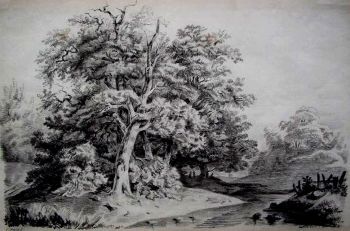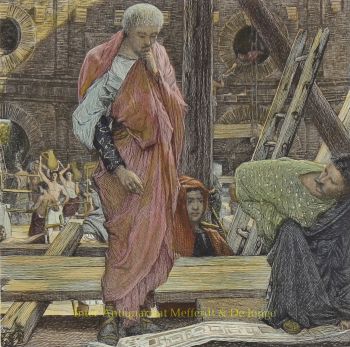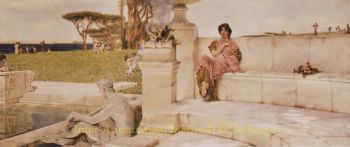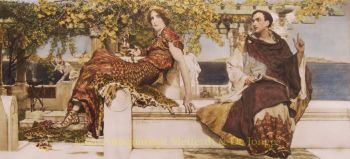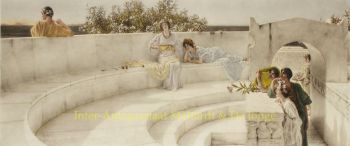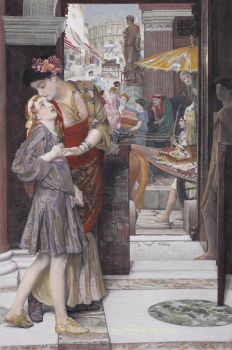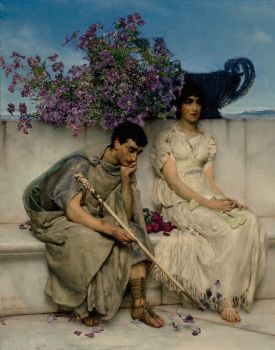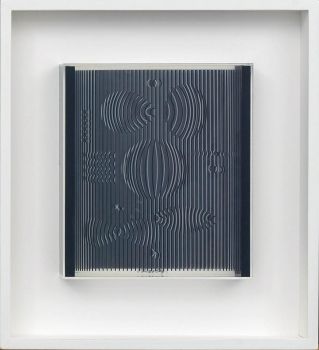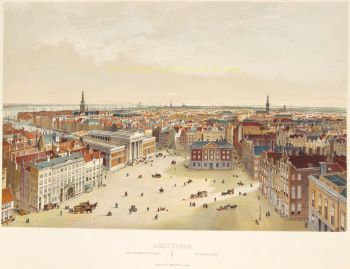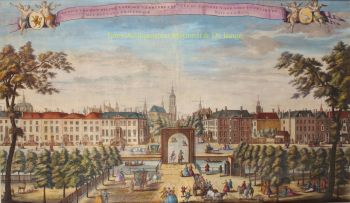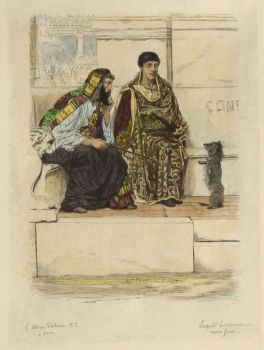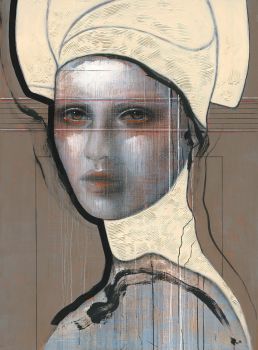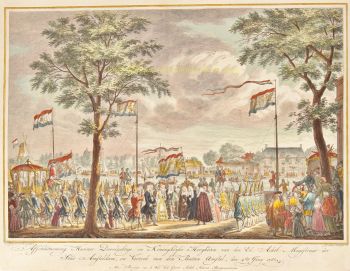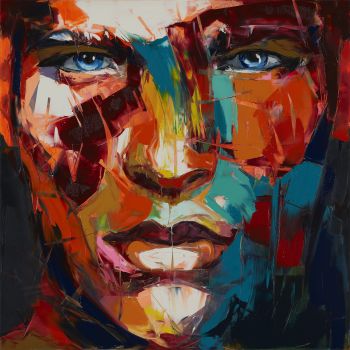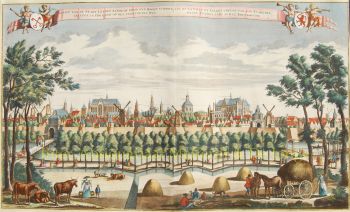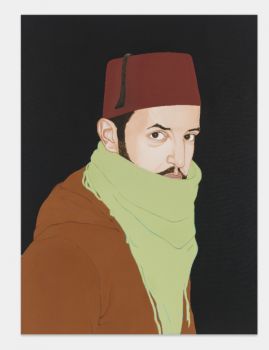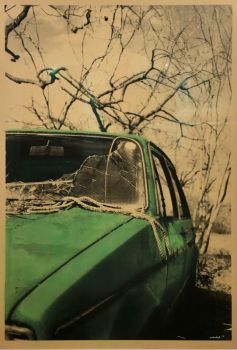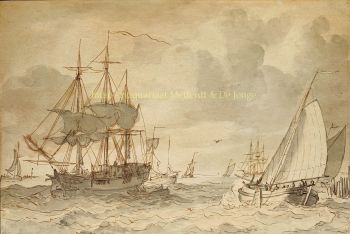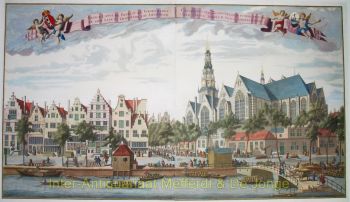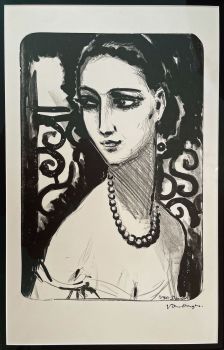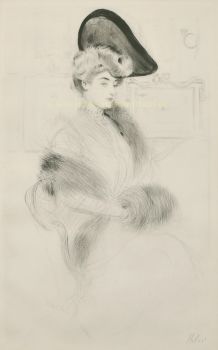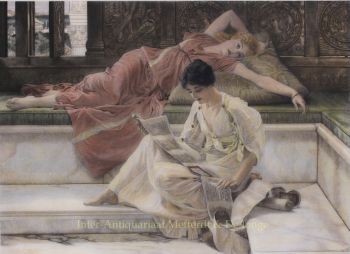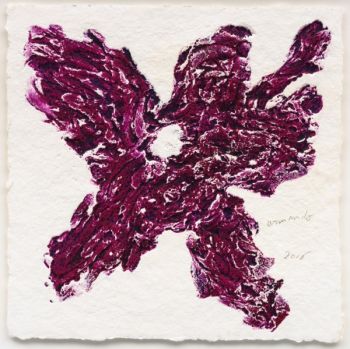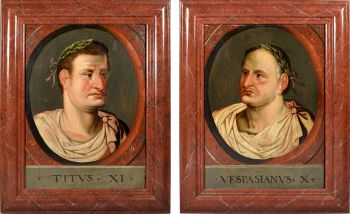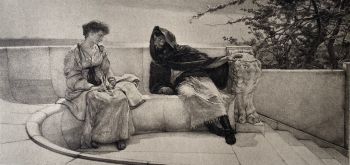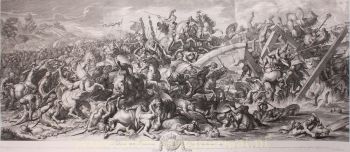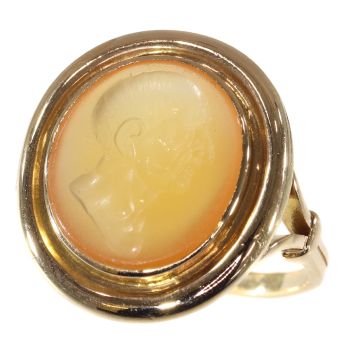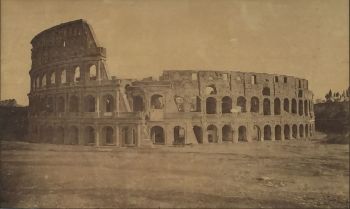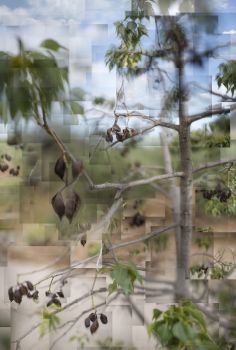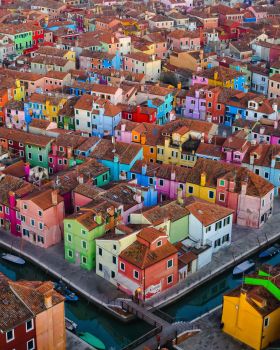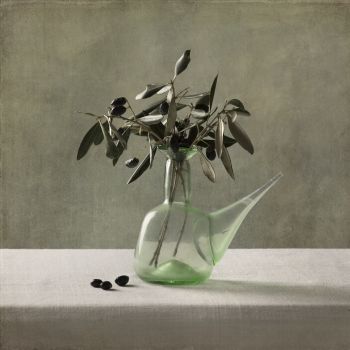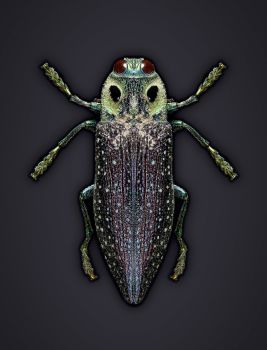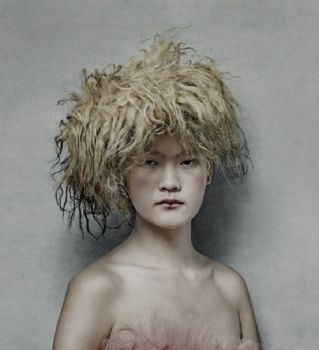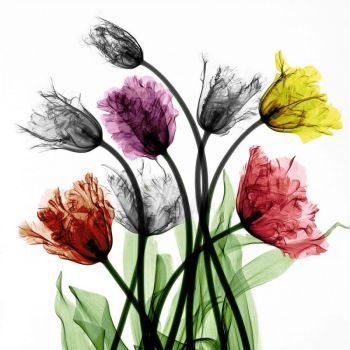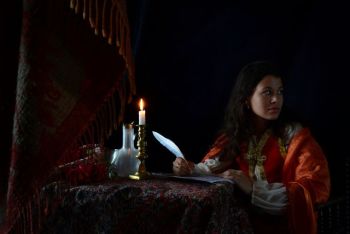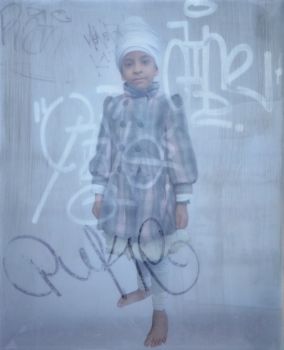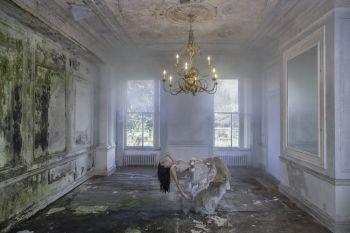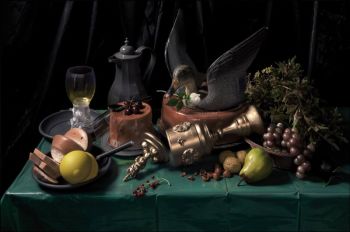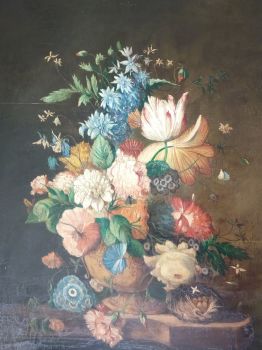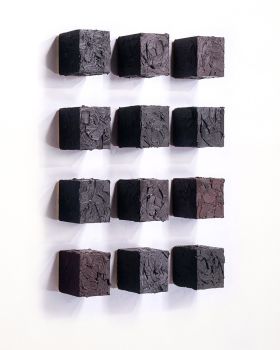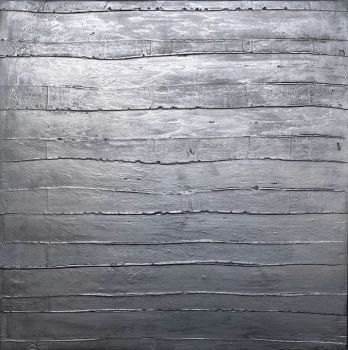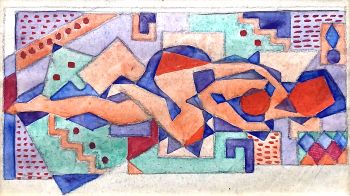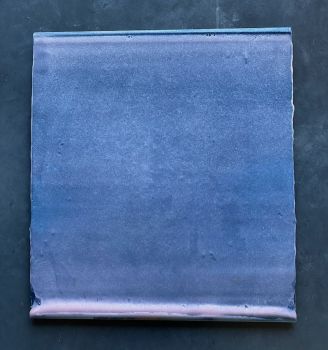"CARACALLA AND GETA: BEAR FIGHT IN THE COLISEUM, AD 203" 1907
Lawrence Alma-Tadema
HeliographyPhotographic print
64 ⨯ 78 cm
€ 2.750
Gallerease Selected
- About the artwork“Caracalla and Geta: Bear Fight in The Coliseum, AD 203”, heliogravure (ets) naar het schilderij (Opus CCCLXXXII) van Sir Lawrence Alma-Tadema, uitgegeven in 1907 door Arthur Tooth & Sons. Linksonder gesigneerd met potlood door Alma-Tadema. Later met de hand gekleurd. Afm.: 64 x 78,5 cm. Op Caracalla and Geta staan beide broers, zonen van Septimius Severus, omringd door familieleden in de keizerlijke loge van het Colosseum. De spelen worden georganiseerd ter gelegenheid van het moment dat Septimius Severus in 203 AD de titel Caesar aan zijn tweede zoon Geta verleent. Caracalla heeft deze titel al zes jaar eerder gekregen en stemt niet in met de tweede benoeming. Hun moeder, Julia Domna, is bezorgd over de toekomst en geeft heimelijk intrigerende brieven aan een bode. Wil zij tussen de ruziënde broers komen en verhinderen dat zij later het Romeinse Rijk onder elkaar zouden verdelen? De werkelijkheid is nog erger. Binnen een jaar na de dood van Septimius Severus, laat Caracalla Geta vermoorden. Caracalla wordt daarmee de enige keizer over het Romeinse rijk. In het Colosseum worden de beren worden losgelaten, het spektakel staat op het punt te beginnen. De spanning in het amfitheater en tussen Caracalla en Geta is voelbaar. Caracalla and Geta was het meest ambitieuze werk uit Alma-Tadema’s laatste jaren. Er staan meer dan 2.500 individueel geschilderde toeschouwers op. Als daar de figuren verborgen achter zuilen en guirlandes bij worden opgeteld en men dit extrapoleert naar de totale omvang van het Colosseum, klopt dit met de algemene aanname dat er zo’n 35.000 toeschouwers in het amfitheater konden plaatsnemen. De pers sprak in de tijd dat het schilderij gereedkwam met ontzag over dergelijke gedetailleerde kennis. Alma-Tadema was meer dan een kunstenaar alleen, de Nottingham Daily Guardian heeft het over de: “Spirit of a scientist and archaeologist [but] not an artist!”
- About the artist
Lawrence Alma-Tadema is one of the most highly renowned romantic artists of late 19th century Britain. He was born in the Netherlands as Laurens Tadema, to the family of the town notary. Later, as he tried to make his niche in the art world, he changed the spelling of his first name to the more English “Lawrence,” and included his middle name “Alma” as part of his surname, so he would be listed among the “A’s” in exhibition catalogues.
As a child, it was decided that Alma-Tadema would pursue the career of a lawyer, but he suffered a mental and physical breakdown when he was fifteen years old. He was diagnosed as consumptive, given a short time to live, and thus free to pursue a life of leisure and pleasure. Once left to his own devices, he decided to study art, as his mother had paid for art lessons in his earlier childhood and it was one of his interests. He regained his health and studied at the Royal Academy of Antwerp in 1852, where he won several respected awards. His first major work was exhibited in 1858, and it won much critical praise, and creating a sensation in the art world. By 1862, he set own in his own studio to pursue his individual career in art.
In 1869, Alma-Tadema lost his wife of six years to smallpox. Disconsolate and depressed, he ceased painting and his health was failing. Under the advice of his physician, he traveled to England for a medical diagnosis, where he was invited to the house of a fellow painter, Ford Madox Brown. It was here that he laid eyes on Laura Theresa Epps, who was 17 at the time, and fell madly in love with her. Alma-Tadema took advantage of the outbreak of the Franco-Prussian war to relocate to England, where he wasted no time contacting Laura and contracting her in private art lessons. It was during one of these lessons that Alma-Tadema proposed, and they were married shortly thereafter. Alma-Tadema was 34 years old, and the bride 18.
Alma-Tadema spent the next part of his life traveling through Europe, and enjoying the continued success of his paintings. As a man, his bursts of bad temper were eased by his extroverted, warm personality and sense of mischief. A perfectionist and obsessive worker, he also innovated a new numbering technique, which made it difficult for forgers to pass off unoriginal works. In his later years, although his artistic output decreased somewhat, he enjoyed continued success, eventually becoming one of the wealthiest painters of the 19th century. He was knighted in England in 1899.
In 1912, Alma-Tadema traveled to Germany to undergo treatment for stomach ulcer, and died in Germany at the age of 76. After his death, his work was mostly ignored. Due to the drastic changes taking place in art, Alma-Tadema’s artistic genius would not come into the public eye again until the 1960s. His meticulous work had since been used as source material for dozens of Hollywood movies.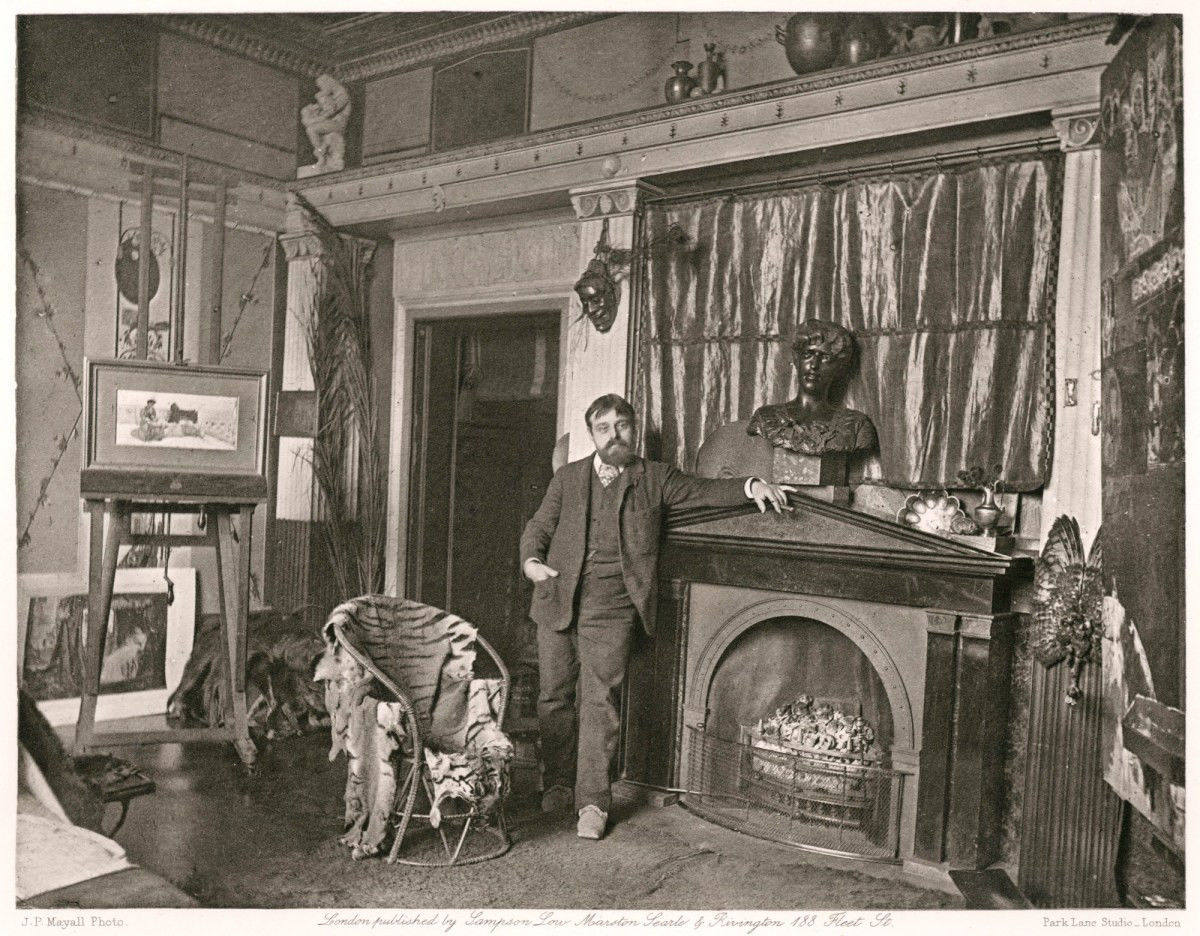
Are you interested in buying this artwork?
Artwork details
Related artworks
- 1 - 4 / 12
- 1 - 4 / 24
Victor Vasarely
"Venus", multiple 1987 - professionally framed, museumglass1987
€ 3.700Van Kerkhoff Art
 Curated by
Curated byDanny Bree
1 - 4 / 24Unknown artist
18th Century Diamond Bracelet with 2000-year-old Intaglios1790
€ 23.000Adin Fine Antique Jewellery
 Curated by
Curated byDanny Bree
1 - 4 / 18- 1 - 4 / 24
Johannes van Dreght
Antique Dutch still life flowers in vase1740 - 1800
Price on requestGallerease Selected
Jean Metzinger
Cubist nude lying with bent leg, circa 19201910 - 1920
Price on requestGallerease Selected
1 - 4 / 12





